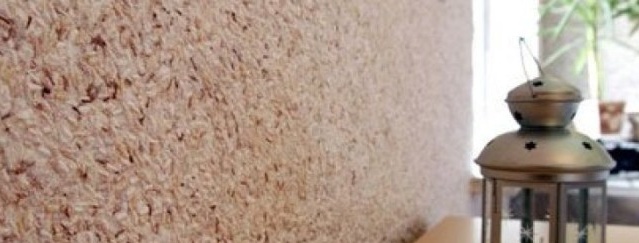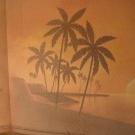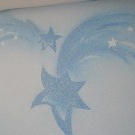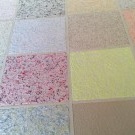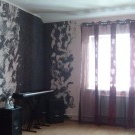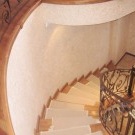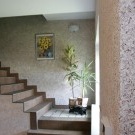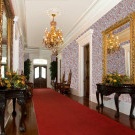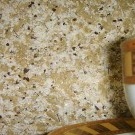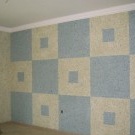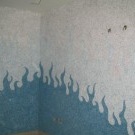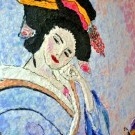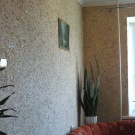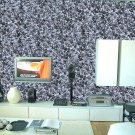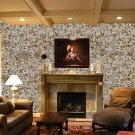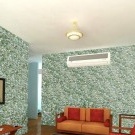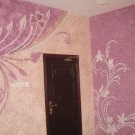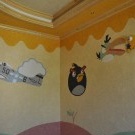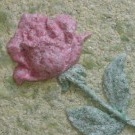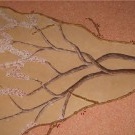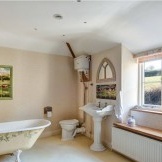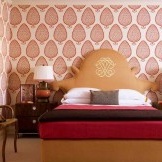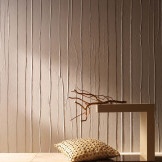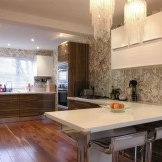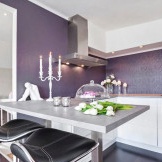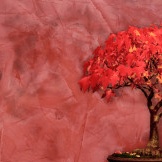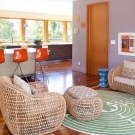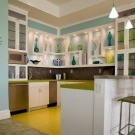Decorative liquid wallpaper: photo and video material
Liquid wallpaper appeared on the market of building decoration materials relatively recently, but has already managed to gain popularity among people who want to design their home in an original style.
A bit of history
WallpaperAs a material for decorating walls, they were invented by the Chinese and were first made from rice paper. Manufacturing technology has remained a mystery for several centuries. Only by the 8th century did wallpaper become available to European masters. Drawings on them were applied manually, therefore such wallpapers were available only to very rich people. But as soon as the matrix for printing was invented, production became widespread.
In the 18th century, silk wallpapers appeared - a prototype of today's liquid wallpaper. The paper base was primed and a wet surface was covered with finely chopped silk threads, resulting in a luxurious silk canvas. Such wallpaper decorated some halls of the Louvre.
So what is liquid wallpaper?
Liquid wallpaper is a mixture of silk or cotton fibers, dissolved pulp, high-quality dyes, colored quartz chips and adhesive. All components are natural, due to which the material is environmentally friendly. Liquid wallpaper in dry form is similar to flakes of different sizes and colors with various additives. In other countries, such wallpaper is called silk plaster.
The benefits of liquid wallpaper will satisfy the most demanding customer:
- antistatic, do not attract dust;
- possess masking and leveling properties;
- easily restored if damaged;
- have a high level of fire safety;
- easy to apply to walls: do not require fitting, do not have joints, there is no need for additional calculations when “bypassing” windows and doors;
- environmentally friendly;
- do not fade, do not absorb odors;
- possess heat and sound insulation qualities;
- do not deform when shrinking in new homes;
- durable, can be used for 10 years;
- available in price range.
Finally, they are simply beautiful and elegant, which allows you to create a custom design for your interior.
There is only one drawback for wallpapers - they are not moisture resistant, and in rooms with high humidity they can lose their shape. To prevent this from happening, they are coated with a special colorless varnish, for example, “Poliver met”. The varnish must be vapor permeable so that the wall can “breathe”.
Preparatory work and the preparation of liquid wallpaper
The surface before applying wallpaper should be leveled and primed. It is strictly forbidden to use the ST-17 primer, since yellow spots appear on the walls when interacting with liquid wallpaper, the Alpina primer is best suited. If there are metal elements on the wall, they are painted over with enamel or oil paint to prevent rust. The color of the walls before application should be white so that the shade of the wallpaper is not distorted.
The mixture, which has the form of dry sawdust, is placed in a plastic container and poured in portions of 100 ml of water, approximately 6 liters per bag, the water temperature should be at least 30 degrees. You can’t do the opposite, pour the mixture into water, kneading will not work. The composition is mixed by hands, until the sour cream is thick, it is necessary to use all the packaging at once, since the surface will need to be coated in one step for a uniform shade of the material. The mixture is allowed to stand for a day, after which it is ready for use.
Wallpapering and care
The best option is to work manually using a paint roller or plastic grater.First, a layer of wallpaper is applied to the joints of the walls, then the material is poured onto the wall in small portions, and then the mixture is leveled from corner to corner, while the tool is not torn off the surface so that seams do not form. The force of pressure on the tool should not be very large, otherwise the material may compress. All work must be completed to the end, before the composition grasps. Wallpaper dries in 2 - 3 days and during drying it is necessary to carefully ventilate the room so that moisture evaporates from the wallpaper, while the temperature in the room should not be lower than 10 degrees. After drying, the wallpaper will get a "real" color.
For liquid wallpaper, only dry cleaning is suitable. If they are varnished, you can use a damp cloth. If the wallpaper is dirty or spoiled, they are gently moistened with water, removed with a spatula, kneaded again and cover either the wall again, or only the damaged part.
Liquid wallpaper is recommended both for office premises and for residential buildings. Thanks to a variety of shades, beautiful texture, ease of application, they are in demand among all segments of the population. By choosing a liquid wallpaper, you can be sure that the interior of your home will be extraordinary.

